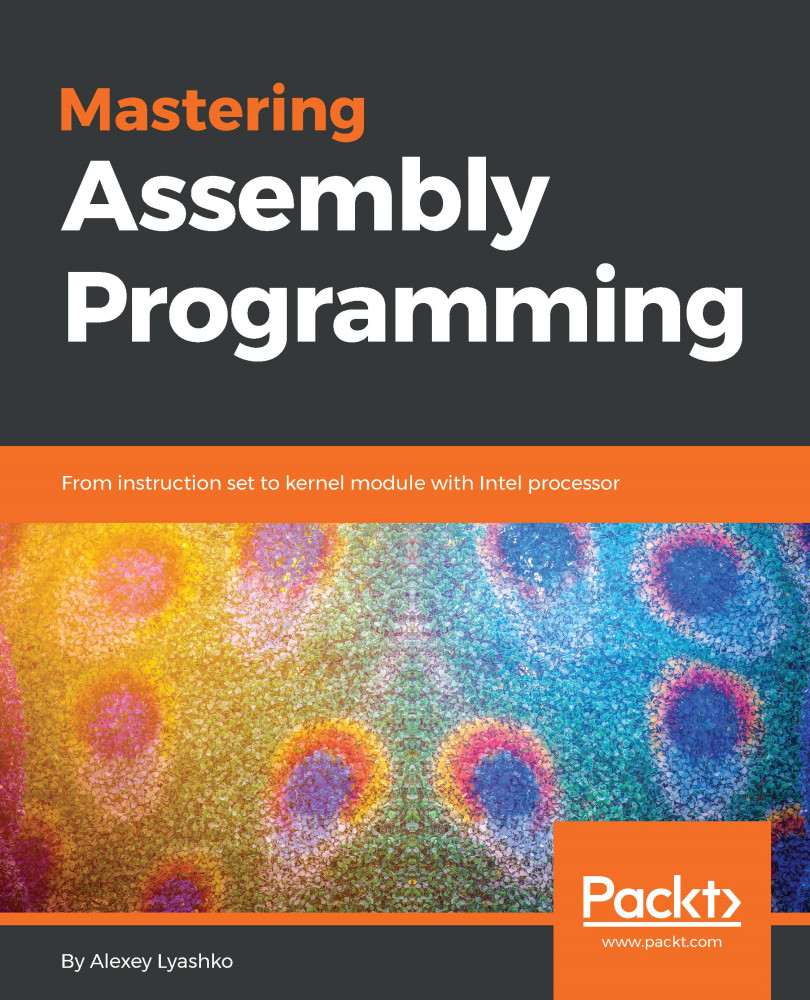Arrays
By now, we have come a long way, dealing primarily with basic data types ranging from bytes to quad words, preparing ourselves for more complex data-related concepts. Let's continue by looking into arrays, which may be characterized as the sequential storage of data of the same type. Theoretically, there is no limitation to the size of array members, but practically we are limited to, for example, the size of a register. However, workarounds exist and we will see that later in this chapter.
Simple byte arrays
A good example of a widely used, yet simple, array would be a forward substitution table and/or a reverse substitution table used with the AES algorithm:
aes_sbox: db 0x63, 0x7c, 0x77, 0x7b, 0xf2, 0x6b, 0x6f, 0xc5 db 0x30, 0x01, 0x67, 0x2b, 0xfe, 0xd7, 0xab, 0x76 db 0xca, 0x82, 0xc9, 0x7d, 0xfa, 0x59, 0x47, 0xf0 db 0xad, 0xd4, 0xa2, 0xaf, 0x9c, 0xa4, 0x72, 0xc0 db 0xb7, 0xfd, 0x93, 0x26, 0x36, 0x3f, 0xf7, 0xcc db 0x34, 0xa5, 0xe5, 0xf1, 0x71, 0xd8, 0x31, 0x15 db 0x04, 0xc7, 0x23...






























































